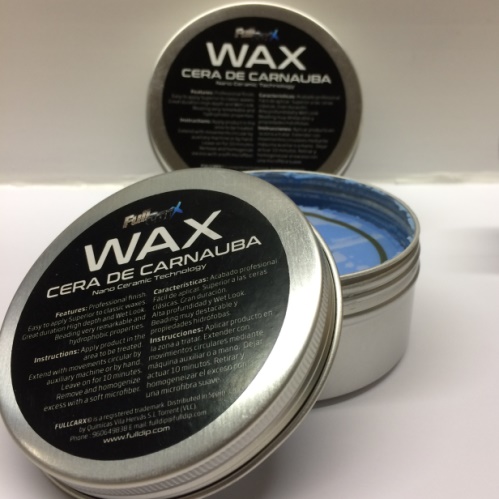

Carnauba wax is also permitted as surface treatment on fresh citrus fruits, melons, apples and pears as well as on peaches and pineapples up to 200 mg/kg food. Maximum permitted use is 200 mg/kg food 12. Carnauba wax is authorized in the European Union as food additive E 903 as glazing agent only to food supplements, small products of fine bakery wares coated with chocolate, snacks, nuts and coffee beans 11. Carnauba wax in foodĬarnauba wax in food is used as coatings for preserving quality and extending shelf-life of fresh fruits and vegetables 10. Additional bleaching with hydrogen peroxide can also be carried out 4. The crude product is normally supplied in lumps. The remaining wax can be extracted from the dried filter cake with solvents (e.g. Centrifugation of the filtrate gives virtually anhydrous wax. The latter is heated to its boiling point and pressed through a filter while hot. The primary purification process of the mixture involves melting in water with oxalic acid which gives a crude wax paste. The dried leaves are chopped and the loosened wax chips are separated by an air classification process to give a mixture of approximately 60% wax and 40% chopped leaves. After drying the leaves in the sun or on steam-heated racks, the wax is removed (loosened) from the leaves manually or mechanically. The wax is located on the outer palm leaves. Carnauba wax manufacturing processĬarnauba wax is obtained from the leaves of the palm Copernicia cerifera. Food and Drug Administration (FDA) and is permitted with no other limitation than good manufacturing practice (GMP) in a variety of food products (FDA’s GRAS – 184.1978) 8. In the USA carnauba wax is classified as Generally Recognized as Safe (GRAS) by U.S. Scientific Committee on Food concluded that the use of carnauba wax was up to 1200 mg/kg of food would yield a worst-case intake estimate of 48 mg/person/day (equivalent to 4.8 mg/kg body weight per day for 10 kg child, or less for an adult) and these levels were within the acceptable daily intake (ADI) of 0 – 7 mg/kg body weight per day set by Joint FAO/WHO Expert Committee on Food Additives (JECFA) 6. The Scientific Committee on Food did not establish an acceptable daily intake (ADI) but considered the use of carnauba wax as a glazing agent acceptable 6. Carnauba wax is identified as being insoluble in water, sparingly soluble in alcohol, but very soluble in chloroform and ether 5.Ĭarnauba wax has been evaluated by the Scientific Committee on Food 6 and by the Joint FAO/WHO Expert Committee on Food Additives (JECFA) who allocated an Acceptable Daily Intake (ADI) of 7 mg/kg body weight per day 7. At room temperature carnauba wax has a weakly aromatic odor and a characteristic hay-like scent in the molten state 4.

The European Food Safety Authority Panel noted that hydrocarbons would only constitute between 0.3 and 1% of the total composition of carnauba wax 3.Ĭarnauba wax is one of the hardest and highest-melting point natural waxes. Cinnamic aliphatic esters are described as consisting of p-methoxycinnamic acid and dihydric alcohols with even-numbered carbon chains from C24 to C34 2. Αlpha-hydroxyl esters are described as consisting of straightchain hydroxyl acids with even-numbered carbon chains from C22 to C28, straight-chain acids with even-numbered carbon chains form C24 to C28, straight-chain monohydric alcohols with even numbered carbon chains from C24 to C34 and dihydric alcohols with even-numbered carbon chains from C24 to C34. Aliphatic esters are described by Joint FAO/WHO Expert Committee on Food Additives (JECFA) as consisting of straight-chain acids with even-numbered carbon chains from C24 to C28 and straight-chain alcohols with even numbered carbon chains from C30 to C34.
Carnauba wax edible free#
Carnauba wax is a complex mixture of compounds consisting mainly of aliphatic esters (wax esters), α-hydroxyl esters and cinnamic aliphatic diesters 2.Ĭarnauba wax also contains free acids, free alcohols, hydrocarbons and resins 2. Carnauba wax is obtained from the leaves of the carnauba palm by collecting and drying them, beating them to loosen the wax, then refining and bleaching the wax. Carnauba wax allergy What is carnauba waxĬarnauba wax also called Brazilian wax and palm wax, is a wax obtained from the leaf buds and leaves of the Brazilian Mart wax palm, Copernicia prunifera (Arecaceae), a plant native to and grown only in the northeastern Brazil 1.


 0 kommentar(er)
0 kommentar(er)
